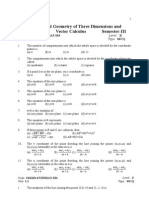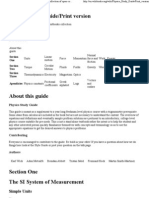0% found this document useful (0 votes)
41 views39 pagesSolution
The document contains a series of physics, chemistry, and mathematics problems and questions, primarily focused on concepts such as magnetic fields, current, chemical reactions, and matrix operations. Each section presents multiple-choice questions with options labeled (A) through (D). The content appears to be structured for educational or examination purposes.
Uploaded by
shauryasindhu13Copyright
© © All Rights Reserved
We take content rights seriously. If you suspect this is your content, claim it here.
Available Formats
Download as PDF, TXT or read online on Scribd
0% found this document useful (0 votes)
41 views39 pagesSolution
The document contains a series of physics, chemistry, and mathematics problems and questions, primarily focused on concepts such as magnetic fields, current, chemical reactions, and matrix operations. Each section presents multiple-choice questions with options labeled (A) through (D). The content appears to be structured for educational or examination purposes.
Uploaded by
shauryasindhu13Copyright
© © All Rights Reserved
We take content rights seriously. If you suspect this is your content, claim it here.
Available Formats
Download as PDF, TXT or read online on Scribd
/ 39

























































































